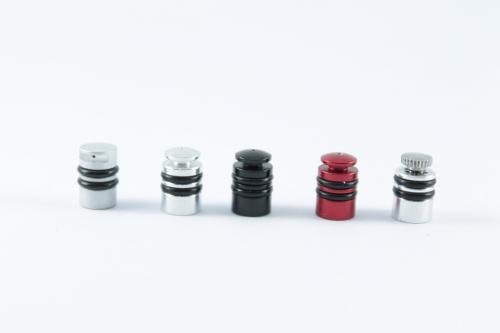Disclaimer
I am neither being paid nor affiliated with 64Audio or Jaben Indonesia. This unit is generously loaned to me by Jaben Indonesia, as a compensation due to my CIEM order from a different brand being delayed.
Introduction
Due to an unexpected delay with my order, Jaben Jakarta kindly offered me an IEM to use while I wait for my order to arrive. Long story short, they loaned me their U10 demo for more than a month and I am posting this review today just after I returned the unit. I would like to thank the crew of Jaben Jakarta for their kind gesture.
Specifications
Transducer type: Ten precision balanced armature drivers
Transducer configuration: 2-low, 4-mid, 4-high
Quad Bore Design
Integrated 3-way passive crossover
Hypoallergenic, hard acrylic shells
Warranty: 1-year Parts and Labor
Impedance: 18Ω @ 1kHz
Sensitivity: 115dB/mW
Freq. Response: 10Hz – 20kHz
Noise Isolation: -20dB with apex m20 module
MSRP : USD 1399
Hardware Build and Comfort

The unit has a transparent shell made with acrylic, with solid build quality. On the bottom of the faceplate, there is a slot for you to use your APEX or ADEL module. It is also lightly decorated with the company logo on the left unit while the right unit has the number 10 printed. At the back of the unit, the serial number is embossed in a small font, providing a clear look on the configurations of drivers inside. The size of this IEM is very small, there are many other IEMS with fewer driver count yet still having a larger footprint. Please note that the unit that I am reviewing is a demo, therefore it might not provide a true representation of the U10’s production version.

Together with the stock cable, the U10 was also loaned to me with the Apex M20 units installed and a pair of silicone tips. The cable has a memory wire but it doesn't add much to its thickness. They feel comfortable to use with my glasses on despite having some microphonic issue. The silicone tips are nice and has a good seal, providing a good amount of noise isolation.

Sony Z5 phone
Questyle CMA400i DAC with Headphone Amp
The U10 is not too picky with its source, they are the kind of phones that will scale depending on what they are paired with. With my phone the U10 sounds warm and musical but hisses a little bit. After plugging it into the CMA400i, it sounds airier and have much better technicality overall.
Sound
Despite only having assigned 2 drivers, the U10 still has a good rumble and punch. Even though it is accentuated, the bass won't present itself until the song asks for it, and they do it with a good ability of hitting it deep and tight.
For the midrange, the U10 sounds relatively smooth and are a little bit laid back. Its lower midrange are just slightly more pronounced than the upper mid. Unfortunately due to its laidback nature, it is not rare that they got congested by the lower ends. Furthermore, there is a slight bit of sibilance, especially noticeable on poorly mastered tracks.
Tuned for a reference sound in mind, their treble have a proper extension and a good amount of presence. The treble have a smooth non fatiguing sound with a tad fast decay. Due to its slightly more forward nature than the midrange, the U10 also has a good resolution and decent transparency.
The whole package sounds good, and even though they are a little bit revealing, I don't consider them to have a reference tuning. They are neither analytical nor neutral, and personally I find the U10 as a laid back phone with a slight v-shaped character. The soundstage on this IEM are airy and wide with a decent depth and height. On the other hand, separation and layering could be better, but it still has a good enough clarity and resolution to capture micro details. I assume as a result of this tuning, the timbre is slightly off which is noticeable on tracks where multiple instruments are playing.
Conclusion
This IEM sounds great no matter whether if the source is good or bad; and because of its signature, they also go well with many genres too. With its small size and a relatively thin cable, comfort is not an issue if you get yourself a good pair of tips. However, the main downside of the U10 is that they don't have any particular strength even though they do well on most conditions. And with a MSRP of $1399, it is difficult to recommend this phone unless you are specifically looking for a mild v-shaped UIEM with a good dose of non-fatiguing treble.
P.S. - Comparison based on memory (Please read this with a substantial grain of salt)
FitEar MH334 (CIEM demo) - The 334 has a reversed v shaped signature. Midrange are more pronounced and timbre is more accurate on the 334, while the treble have more authority on the U10. The U10 have a smaller soundstage than the 334, with poorer imaging but equal detail retrieval.
Custom Art Harmony 8.2 (CIEM demo) - The 8.2 sounds warmer, less treble presence and more coherent than the U10.
Ultimate Ears 18+ Pro To Go - The 18+ sounds leaner with more accurate timbre but there is very little upper end presence compared with the U10.
Noble Kaiser Encore Universal - The Encore bass is less authoritative, while treble are brighter and has better extension than the U10. Soundstage are bigger on the Encore and overall they have a better resolution and detail retrieval than the U10.
Aroma Witch Girl Pro Universal - The Witch Girl Pro have a well pronounced low end and a more reserved mid and upper range versus the U10.



















































